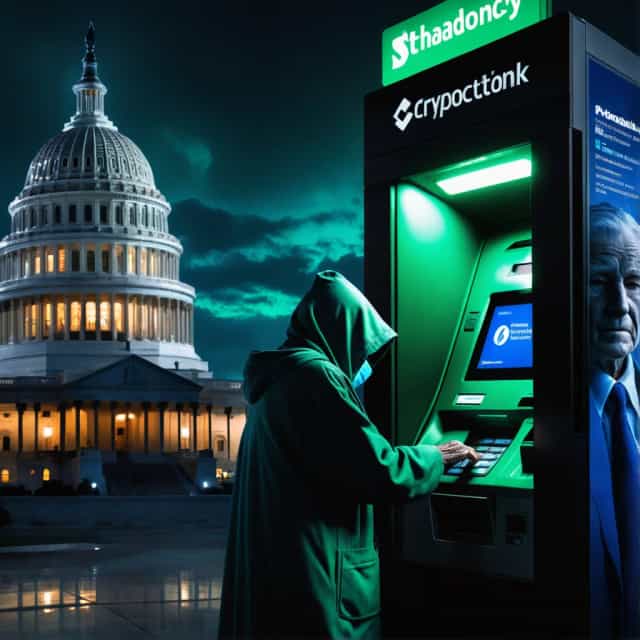
출처: Block Media
Intel Stock Soars Amid Strategic Investment Talks with Apple
Intel (INTC) has experienced a significant surge in its stock price, fueled by reports that the company has proposed a strategic investment deal to Apple (AAPL). This initiative represents Intel’s latest effort to revitalize its semiconductor business, which has faced stiff competition in recent years. The development also occurs in the broader context of U.S. government backing for domestic chip manufacturing, underscoring strategic partnerships as a key factor in reshaping the industry.
Intel-Apple Investment Discussions: What We Know
According to a Bloomberg report on October 24, which cited multiple sources familiar with the matter, Intel recently approached Apple regarding a potential investment deal. These preliminary discussions reportedly revolve around collaboration on foundry services, including contract-based chip manufacturing. While no concrete agreements have yet been reached, the news spurred strong market reactions.
Following the report, Intel’s stock soared by 6.41% on the New York Stock Exchange, closing at $31.22. In contrast, Apple’s stock saw a slight decline of 0.83%, finishing at $252.31. The emerging talks reflect substantial developments in Intel’s strategic efforts to reposition itself as a competitive industry player, leveraging partnerships with leading private-sector companies.
Strategic Investments Bolstered by Government Support
Intel has been actively seeking external funding to strengthen its capabilities in the competitive semiconductor landscape. Over the last month alone, the company has secured $2 billion from Japan’s SoftBank and $5 billion from NVIDIA. These investments demonstrate Intel’s deliberate steps to fortify its financial foundation and enhance its technological competitiveness.
In a notable move last month, the U.S. government mediated and acquired a 10% stake in Intel, a decision directly aligned with the federal initiative to boost domestic semiconductor manufacturing. Amid growing concerns over global supply chain vulnerabilities, this governmental backing is aimed at fostering a robust U.S. tech infrastructure.
A Complex Relationship: Apple and Intel
Apple and Intel share a layered history of collaboration and competition. Once Apple’s primary chip supplier, Intel saw its influence diminish in 2020 when Apple transitioned to its proprietary M-series chips, manufactured by Taiwan Semiconductor Manufacturing Company (TSMC). This marked a significant turning point, as Apple’s reliance on Intel processors was virtually eliminated.
Despite this transition, there remains potential for new forms of collaboration between the two tech giants. Apple has been vocal about its interest in expanding its U.S.-based manufacturing efforts. At a White House event in August, the company announced plans to invest $600 billion in the U.S. over the next four years, including $2.5 billion dedicated to Corning, the maker of Gorilla Glass.
In a recent interview with CNBC, Apple’s CEO Tim Cook remarked, “We would welcome Intel back,” signaling a potential openness to cultivating competition in the U.S. foundry market. While skepticism persists among industry experts about Apple returning to Intel for core processor manufacturing, these developments hint at room for mutually beneficial partnerships.
Intel’s Uphill Battle for Market Leadership
Once the undisputed leader in the semiconductor industry, Intel has faced an array of challenges in recent years, casting doubt on its ability to maintain a top-tier position. Competitors like NVIDIA and Advanced Micro Devices (AMD) have outpaced Intel in the high-performance computing chip market, while its foothold in the growing AI semiconductor sector remains limited. Additionally, financial headwinds have forced Intel to scale back factory investments, leading to delays in production and layoffs across its workforce.
Under CEO Lip-Bu Tan, Intel has aimed to expand its foundry business. This initiative, originally launched under Tan’s predecessor, represents a core component of Intel’s recovery strategy. However, the lack of a stable, long-term client base has made it difficult for the foundry business to generate consistent returns. In July, Tan stated, “We will delay the adoption of next-generation processes (14A) unless customer demand is secured.”
Despite these obstacles, Intel’s outreach to Apple marks a potentially transformative opportunity. A partnership with one of the world’s most valuable companies could provide the financial and technical impetus Intel needs to reclaim its industry standing.
Shifting Dynamics in the Semiconductor Landscape
The semiconductor industry continues to evolve amid geopolitical challenges, advancing technologies, and increasing competition. Intel’s proposed collaboration with Apple reflects a forward-looking approach to navigate these shifts while addressing immediate business concerns.
For Apple, such a collaboration could align with its commitment to boosting U.S.-based manufacturing while potentially diversifying its supply chain. For Intel, leveraging Apple’s scale and resources could reinvigorate its foundry operations and position the company to compete more effectively against industry rivals.
In an increasingly complex global environment, this potential partnership could signal a turning point, not only for Intel and Apple but for the broader U.S. semiconductor industry. Whether these discussions yield a formal agreement remains to be seen, but the market's response underscores the high stakes and interest surrounding Intel’s moves to stay competitive in the digital age.










